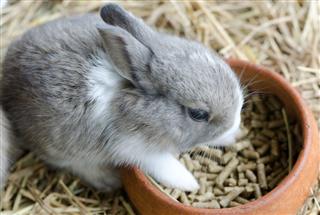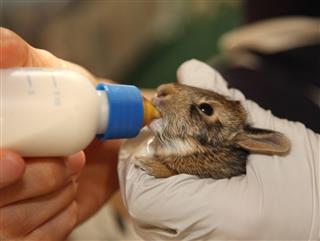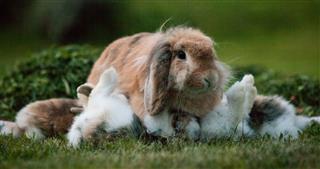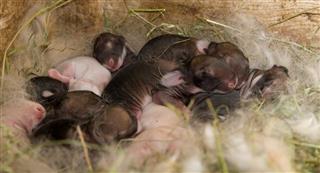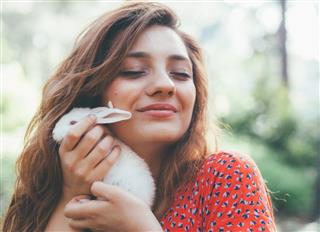
Taking care of newborn baby rabbits may seem like a daunting task, but it is fairly simple if the mother rabbit is doing her bit. Here are a few pointers to note that will ensure that the babies are properly taken care of.
Many people wonder how to care for the litter of their pet rabbit. The newborns are tiny and seemingly helpless. But one must remember that nature is a good provider, and that the babies will be taken care of by the mother. Many people may come across nests with baby bunnies in the wild, and by not seeing the mother around, presume that she has abandoned them. However, in reality, she keeps visiting them for feeds, as her constant presence with them makes them more susceptible to attacks by predators. Thus, it is advisable not to disturb the nests or ‘rescue’ wild baby rabbits. Also, what is sometimes viewed as a mother’s nonchalance towards her babies, is actually her effort to divert attention away from them.
The Beginning
For most pet rabbits, the gestation period is usually 30 days. A litter size depends on the breed, but on an average you can expect between 6 to 12 babies. In preparation for the newborns, the mother is often seen pulling out her fur for preparing a nest.
Newborn baby rabbit care includes creating a nest for them. This can be done by lining a box or tray with hay or any soft material. Your tray should be ready and placed by the mother 28 days after breeding, at the latest. If you line the tray with newspaper, don’t be surprised if the mother shreds the paper. Some mothers will also take out all the hay and replace it piece by piece. Also, once the babies arrive, keep the nest clean and replace the hay whenever needed.
Nursing
Another misconception shared by many is that the mother is not feeding the newborns. A mother rabbit does not nurse her babies immediately after birth. The reality is that she feeds them only once in 24 hours, which is not often witnessed by the owners. Also, usually, the feed is given between 12 midnight and 5 a.m. A rabbit mother stands over the babies to nurse them. One indication that they have been fed is if they are warm and display little round bellies in the morning. As an owner, if you miss the feed but want to ensure that the babies are being fed, then you can weigh them on a scale. Keep a record of this, as if they are gaining weight (¼ oz. or so), even a little at a time, then they are being fed. Don’t worry about handling the babies as domesticated rabbits are used to human smells and will not abandon the babies due to them.
Feeding at Home
In the unlikely event that the babies are not being fed by the mother, your vet will instruct you on how and what to feed them. Meals may be administered through an eye dropper or a sterile oral syringe. However, one has to be extremely careful or the baby may choke. A rabbit mother also cleans them and licks their bellies and bottoms to stimulate expulsion. If the mother is not around to do this, one may use a cotton ball moistened with warm water to gently stroke the bunny starting from between the front legs all the way down over the bottom.
Growing Phase
Baby rabbits open their eyes after about 10 days. If their eyes don’t open by the 12th day, it is time for a visit to the vet. This is the time you may start adding some hay and pellets that are plain, high-fiber, and fresh, to their diet. Do not add veggies or fruits as yet. They should start moving around and exploring the surroundings within 2 to 3 weeks.
Much of the care for baby rabbits is done just by keeping an eye on them to ensure that they are healthy, and that the doe is taking good care of them. You may also want to make arrangements for the ones you want to give away.
